Gas corrector: functions and frequency of checking fuel volume adjustment devices
Agree, gas supply to an apartment is much easier than to a private house.In the cottage, the boiler and gas stove, and especially the boiler, consume methane in cubic meters, carefully calculated by a flow meter, mandatory since 2019.
But the thermal calorie content and pressure of blue fuel are unstable, so the meter can overcharge. The situation will be corrected by a gas corrector, capable of reducing the “wound” cubic meters to the norm of the standard aggregate state of methane. The device is particularly convenient – it requires almost no attention.
Let's talk about it, explain the influence of temperature on the cost of main gas and how the corrector helps reduce utility costs.
The content of the article:
What does this device do?
The purpose of the gas volume flow corrector is to measure pressure, temperature and working volumes of methane fuel recorded by the flow meter. The device is equipped with signal converters based on measured criteria received from the gas meter and analyzed by a microprocessor.
The compressibility coefficient is calculated either by the corrector itself (GOST 30319.2-2015), or is substituted according to a preset value.
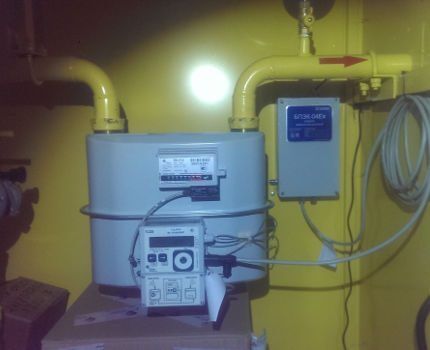
The measurement results make it possible to convert the consumed cubic meters of natural gas into volume under standard methane conditions in accordance with GOST 2939-63, taking into account the conditionally constant parameters of gas fuel - density under standard conditions, CO content2 and N2.
The relative error tolerances over the full operating temperature range are:
- by pressure measurement +/-0.4%;
- by temperature measurement +/-0.3%;
- to bring the volume to standard conditions +/-0.5%;
- by measuring the volume of methane under operating conditions +/-0.05%.
As the corrector accumulates data on the parameters of the incoming gas, they are archived at 60-minute intervals. Depending on the device model, it stores data for the last 270-365 days at the time of accessing the archive. Archived data is stored on a smart card.
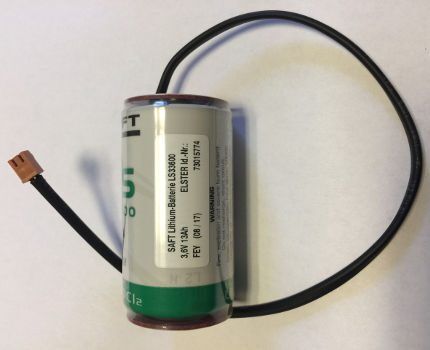
The device's autonomous power supply will provide it with energy for at least 7 full days, provided that the interface screen is active for no more than 15 minutes during this period. It should be noted that the main source of power supply for the methane data correction device is a household electrical network through an AC-to-DC converter with a voltage of 9 V (current 100 A).
If necessary, the corrector's operating functions can be used to control blue fuel consumptionby setting a daily and monthly limit to track your balance.
Features of installing the corrector
The device for correcting methane metering characteristics is connected to a flow meter equipped with a pulse output signal (frequency range up to 2-8 Hz, pulse weight 0.01-100 m3). It is also possible to connect to gas meter with a position-coding mechanism (encoder) installed in the counting head.
Physical fastening of the device for correction (standardization) of data on the consumed volume of gas fuel is carried out on the meter body (if mounting space is available), on a bracket, or on the wall. The correction device usually weighs up to 3 kg.
It is mandatory to ground the corrector using a rectangular bus with a cross-section of 4 mm or more2. External devices are connected to the device using a shielded cable with a core cross-section of 0.25 mm2, no more than 10 m long.
Methods for integrating a flow meter with a corrector
In the first option, gas consumption control elements are supplied separately: a gas meter with an electrical output (for example, a reed switch-magnet pair); a pressure sensor having a unified current output; temperature sensor (electronic resistance thermometer); a correction device for standardizing the characteristics of the consumed volume of gas.
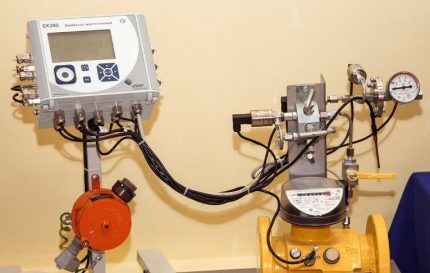
Combined into a complex, these devices form a unified system of measuring instruments. However, it can be used in this capacity only after agreement with the local branch of Gosstandart. The advantage of this complex is the permissibility of standardizing readings from several gas meters (i.e., from several gas pipeline inlets).
The disadvantage of such a system is the varying timing of verification of its elements, among which temperature and pressure sensors will most often need to be checked. It will be easier not to verify the latter, but simply replace them with new ones.The general advantage of such a measuring system is that its final cost is lower than that of a factory multichannel system.
In the second option, the measuring complex is created entirely at the manufacturing plant. Here it is important to select a system with a close calibration period for the elements. For example, the LGK-Ex rotary gas meter has a verification period of two years, and the corrector and pressure sensor have a verification period of 5 years. This means the need to verify the entire complex 2.5 times over a five-year interval of use, which is inconvenient and unprofitable.
How to set up the device?
Specifying constant information is not required; they are entered at the device manufacturer. Those. After installation and connection of wires to the data source (gas meter), the corrector is completely ready for operation.
Access to changing the corrector data is divided between three parties - the metrological service, the gas supply organization with which contract signed for service, and the consumer. Each side has its own code (an eight-digit combination of numbers) that allows access to the device’s program menu.
The consumer is given the lowest access priority, and the highest is given to the metrological organization. In fact, the user can only control the output of data to the device interface - full or short display mode.
Changes to the parameters required for calculating the volume of gas fuel consumed (the “metrological” part of the software) are allowed only during official calibration, which is performed exclusively when checking natural gas volume correctors. The calibration lock button is protected by a padded seal (easily broken!).
Frequency of verification
A calibration check of the accuracy of the measurements carried out by the device for correcting the consumed volume of natural gas is required once every 5 years (provided that the corrector is in good technical condition during this period).
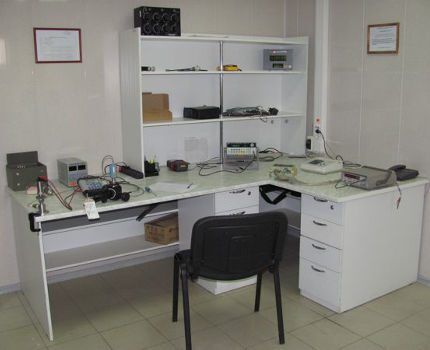
Verification methods are developed by manufacturers of correction devices with mandatory approval from the Federal State Unitary Enterprise "VNIIMS" or regional FBU "TsSM". The right to perform verification tests is granted to the state metrological service (FBU "TsSM") or private metrological services that have the appropriate certificate of the Russian Accreditation Service.
Purposes of correcting natural gas meter readings
Note that although the rated operating temperature range of the flow meter can be +/- 40OSince the temperature coefficient increases the price of gas fuel, this has no significance.
Rules for civil gas supply for municipal purposes No. 549 state the need to multiply the volume of methane consumed by the meter by the coefficient of reduction to standard conditions (designation - Vp), standardized by GOST 2939-63:
- gas temperature – 20OC (also 293.15OTO);
- gas pressure – 760 mmHg (also 101.325 kN/m2);
- gas humidity is zero.
Since “outdoor” temperatures change over the course of a calendar year, different conversion factors to the “gas standard” are applied to the volume of gas consumed - in the winter months they are always higher.
The values of these coefficients are established by the Federal Metrology Agency.In particular, since 2019, temperature coefficients determined by order No. 1053 have been in effect in Russian regions.
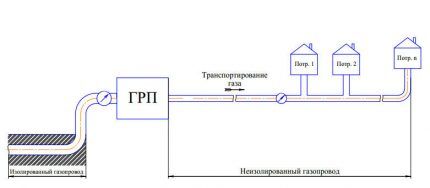
To avoid multiplying the consumed volume by the regional coefficient established by the standards, the homeowner must choose a flow meter equipped with a temperature compensator to record gas consumption.
The location of the gas meter - external (outside the house) or internal (in a technical room) - does not matter. Here you either pay for the consumed volume of methane taking into account the temperature coefficient, or install a gas flow meter with a built-in temperature compensator.
The device, which compensates for temperature differences in gas fuel, is a bimetallic plate built into the mechanism for measuring volume as methane passes through the meter. Under the influence of the temperature of natural gas, the plate bends in a certain way and influences the gas consumption metering process so that the readings correspond to the standard conditions of the fuel condition.
What is the benefit of adjusting gas consumption?
Gas fuel is supplied to consumers in populated areas from the main gas pipeline by a system of common high- and medium-pressure collectors stretching over tens of kilometers.
Before transferring volumes of gas to a company that directly supplies fuel to end consumers through gas outlet pipelines, the main parameters of methane are measured at the exit from the gas distribution station - volume (or flow), temperature and pressure.These parameters directly affect the income of organizations involved in the transportation and distribution of methane to households.
Therefore, bringing the volume of burned methane in boilers, boilers and gas stoves to standard temperature conditions in accordance with GOST 2939-63 is initially carried out in the interests of natural gas suppliers.
Convenience for regional gas services
During the frosty winter months, the pressure in the “air” gas pipeline decreases, since its value is directly proportional to the gas temperature (Charles’ law). In this case, the density of gaseous fuel increases, and the volume decreases (Boyle-Mariotte law).
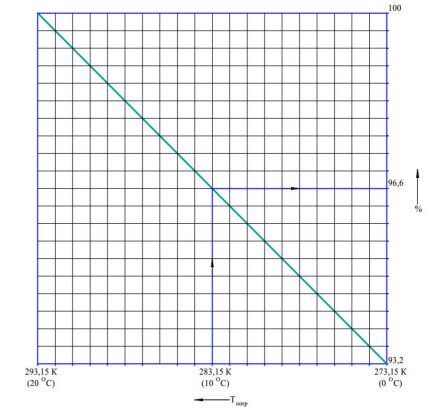
As a result, there is a so-called imbalance between the supplied and consumed volumes of blue fuel. Those. a house gas meter will record a smaller number of cubic meters of methane than actually consumed by the heating appliances of the cottage.
Conversely, at summer temperatures above 20OThe gas meter of a private home will show more methane consumption than actually received. However, in the summer, households burn less natural gas, because its main consumption is associated with the heating season.
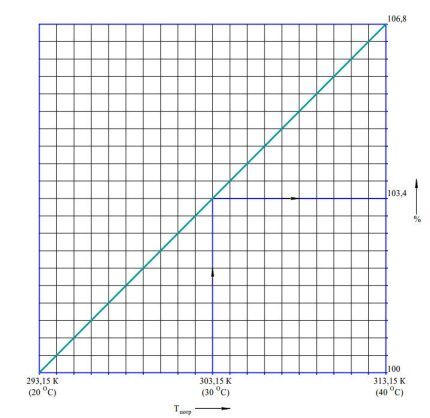
Thus, the use by households of a full-fledged gas corrector or only a thermal corrector, or payment for the consumed volume of methane fuel with surcharge factors usually occurs to the benefit of the gas supplying organization.
But in one, by the way, quite common situation with gas supply, a device that adjusts the parameters of blue fuel can bring real benefits to the homeowner.
Benefit for household owners
During the frosty months, residents of suburban real estate are worried about another problem - excessively low pressure in the gas transmission network, which complicates the process of heating the house. The flame above the burner barely glows and the boiler equipment either turns off on its own or warms up coolant in the home heating circuit no higher than 60OWITH.
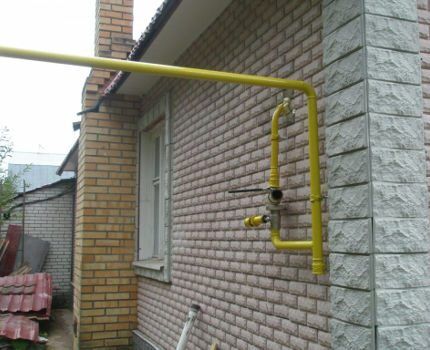
The reason for the weak gas supply in winter is clear - heating floor And wall-mounted boilers houses burn more methane, otherwise households simply cannot be heated. And most owners of country cottages with year-round use resign themselves to weakened pressure in the gas pipeline, supplementing gas heating units with boiler equipment using alternative fuels (wood, coal).
However, they do not realize that they not only have to endure the cold atmosphere at home every winter, but also overpay for cubic meters of gas!
According to the Boyle-Mariotte “gas” law, when the pressure in a gaseous medium drops, its volume increases. Those. when the pressure in the “air” decreases, the volume of methane entering the flow meter increases and the meter will begin to increase non-existent cubic meters. Overpayments on “inflated” gas bills can reach 5-7% during the heating season.
And only a flow meter with an electronic natural gas corrector, configured according to the “local” parameters of methane standardization by the official metrological service, will allow consumers to pay for cubic meters of blue fuel burned by thermal equipment based on actual consumption.
Conclusions and useful video on the topic
How to use the menu of the device for correcting the volume of gas consumed (using the example of EK270):
How does the device for standardizing the volume of methane inside work (using the example of LNG 741):
How to read and configure parameters in the corrector menu (using the example of SPG 761):
By retrofitting the gas flow meter with a corrector, cost savings on gas consumption will be noticeable if the consumption of blue fuel is more than 4 cubic meters per hour. After all, if you have to put up with weak pressure in the gas pipeline supplying the household, then there is absolutely no need to endure overpayment for non-existent volumes of gas consumption.
Would you like to share your own experience in using a gaseous fuel consumption corrector? Please write comments in the block below, ask questions, post photos on the topic of the article. It is possible that your recommendations will be useful to site visitors.




Tell me, does the mid-di-13p pressure sensor affect the operation of the corrector?
Can the corrector show the standard volume 3 times more than on the counter? The average outside temperature is 9-10 degrees, the pressure gauge reading on the medium pressure gas pipeline is 0.2 MPa?